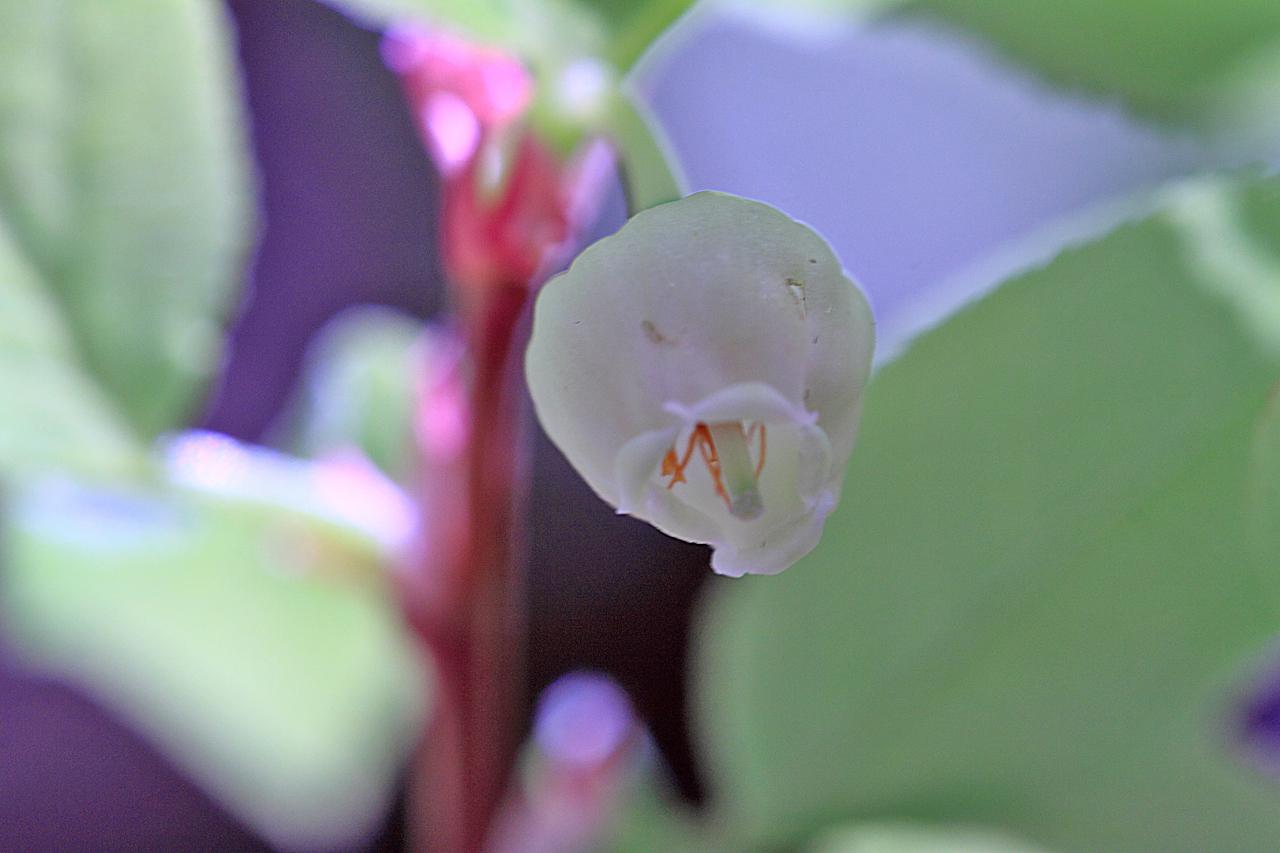
|
Family: Ericaceae |
Subshrubs, shrubs, vines, or trees. Stems erect, spreading, or creeping, glabrous or hairy. Leaves persistent or deciduous; petiole absent or present; blade elliptic or ovate to oblong-lanceolate or spatulate, membranous to coriaceous, margins entire or serrate, plane or, sometimes, revolute, surfaces glabrous or hairy; venation brochidodromous. Inflorescences axillary or terminal, racemes, usually 2-10-flowered, sometimes flowers solitary, (leafy); (bracteoles absent, present in sect. Oxycoccos). Flowers: sepals 4-5, connate basally; petals 4-5(-6), connate nearly their entire lengths, sometimes distinct or nearly so, white or cream to pink, bronze, or green, rarely red, corolla globose, cylindric, urceolate, or campanulate, lobes shorter to longer than tube; filaments straight, flat, glabrous or hairy, without spurs; stamens 8-10, included (sometimes exserted); anthers with or without awns, dehiscent by pores (pores laciniate in sect. Polycodium); pistil 4-5-carpellate; ovary inferior, 4-5-locular or pseudo 10-locular; stigma capitate. Fruits baccate, ovoid to globose, fleshy. Seeds 2-40, ellipsoid; testa reticulate. x = 12. The North American species of Vaccinium are distributed among ten sections. Some of these (e.g., Oxycoccus, Polycodium) have been treated as genera by recent authors, although only Oxycoccus has been recognized at genus rank widely among North American authors. Molecular data support the idea that Vaccinium is a natural genus, albeit large and diverse, provided that Oxycoccus is included. In eastern North America, the name huckleberry is applied to species of Gaylussacia, while in western North America some species of Vaccinium are called huckleberries. Most, if not all, species of Vaccinium are edible, finding wide acceptance as fresh fruits, and for pies, preserves, etc. Some have medicinal value, especially V. macrocarpon for urinary problems. Further uses and references are noted with the individual species.
PLANT: Shrubs openly branched. LEAVES: deciduous, alternate; margins entire or serrulate, short petiolate. INFLORESCENCE: solitary in leaf axils. FLOWERS: perfect, actinomorphic; sepals 5-lobed or fused, glabrous; corollas shallowly 5-lobed, white to pinkish, pedicellate; stamens 10, usually included at the base of the corolla; anthers dehiscing terminally, with a pair of spurs; ovaries inferior, 5-celled; styles slender. FRUITS: berries with many seeds. NOTES: 400 spp., worldwide, temperate, subtropical and tropical montane regions. (Latin: bacca for berry). REFERENCES: Yatskievych, G. and M.D. Windham. 2008. Vascular Plants of Arizona: Ericaceae. CANOTIA 4 (2): 21-30. Fls 4-5-merous, epigynous (seldom only half-epigynous); cal spreading or appressed; cor tubular or ovoid to campanulate, shallowly to deeply lobed; stamens 8 or 10, commonly included; anthers with 2 pollen-sacs, each sac opening by a pore at the end of a terminal tubule; style slender, usually surpassing the stamens; fr a many-seeded berry, commonly 4-5-locular, or sometimes 8-10-locellar; evergreen or deciduous shrubs or small trees with entire or serrulate lvs and solitary or racemose fls terminal or in the axils. (Cyanococcus, Oxycoccus, Polycodium) 400+, widespread. Spp. 9-15 form a difficult complex Gleason, Henry A. & Cronquist, Arthur J. 1991. Manual of vascular plants of northeastern United States and adjacent Canada. lxxv + 910 pp. ©The New York Botanical Garden. All rights reserved. Used by permission. |
This project was made possible in part by the Institute of Museum and Library Services [MG-70-19-0057-19].
Powered by Symbiota



